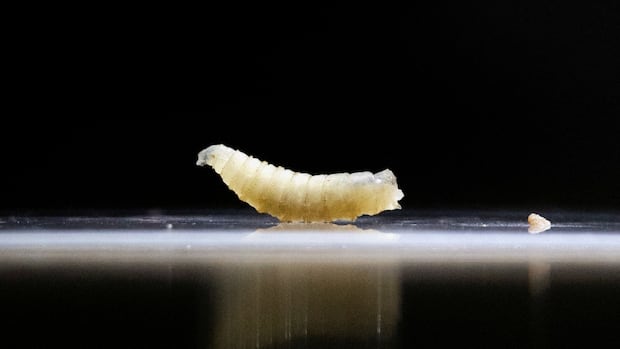A flesh-eating parasite known as the New World screwworm has been causing concern after infecting a recent traveler from the United States and another from Canada. This parasite, which burrows into the skin of its host and feeds on tissue, has been spreading among livestock in Central America. While human cases of infestations are rare and not transmissible between people, the impact on cattle ranchers is significant, with an outbreak in Central America and Mexico raising alarms among farmers.
The New World screwworm fly’s larvae, responsible for infestations, are typically laid on warm-blooded animals, hatching into maggots that feed on the host’s flesh. While parasitic infestations like myiasis are common and usually not dangerous, the New World screwworm is more aggressive, feeding on living skin. Symptoms of screwworm infestations include ulcerated lesions, foul odors, infections, and potential fatality, especially in animals.
Treatment of screwworm infestations involves removing the larvae from the tissue, which can sometimes require surgery due to the larvae burrowing deep into the flesh. Travelers to affected regions are advised to seek medical attention if symptoms develop post-trip. Preventive measures, similar to those against mosquitoes, can help deter New World screwworm flies.
Although human cases are rare, the impact on livestock, particularly cattle, is a significant concern due to potential economic losses for farmers. Efforts to control the New World screwworm population have been successful in the past, but a recent resurgence in Central America poses challenges for containment. Monitoring the outbreak and understanding the factors contributing to its spread are crucial to prevent further escalation.
The Canadian Food Inspection Agency reassures that the New World screwworm is not present in Canada and would not survive the country’s winter temperatures. While the risk to travelers is low, vigilance and awareness of potential symptoms post-travel are recommended.



